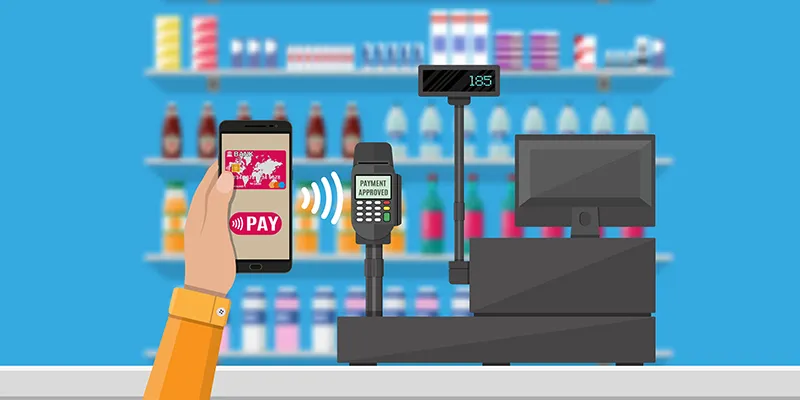Acceptance of e-payments: boosting sales of MSMEs
While the Micro, Small & Medium Enterprises (MSME) sector forms the backbone of the Indian economy, it continues to remain and operate offline, despite the surge of digitisation sweeping across the nation.
According to the joint study shared by KPMG and Google, 68 percent of Indian MSMEs have continued with their traditionalist approach by operating completely offline.

Even those with an access to digital infrastructure are yet to fully leverage its benefits. The report further added that merely two percent of over 51 million micro, small and medium sized enterprises in India are actively engaged in digital operations, including buying and selling online.
This status quo needs to be disrupted, given the higher aspirations of the Indian economy.
The digitisation boom
Adhering to the wave of digitisation opens the floodgates of opportunities for Indian MSMEs. Accepting electronic payments enables them to move beyond borders and sell in geographies that would otherwise remain outside of their scope.
Further, social selling has taken the industry by storm. In an exclusive report by Zinnova that was shared with Times of India, it was revealed that nearly two million women homemakers have started work from home and are drawing business worth USD 8-9 billion by selling via Facebook and WhatsApp.
In accordance with the rising popularity of Social Selling, the leading payment solutions providers allow MSMEs to sell via Facebook, Twitter, Instagram or Whatsapp.
While digitisation is beneficial for the overall health of an enterprise, the reports shared by KPMG in India and Google further supported the notion with concrete numbers. MSMEs with a digital presence have grown up to two times faster than their offline counterparts. While offline enterprises were restricted to geographical boundaries of their operations, 51 per cent of digitally-enabled enterprises were able to move beyond and sell to other cities.
Naturally, owing to improved unit economics, MSMEs with a digital presence were able to scale-up quickly without the swelled up overheads. Owing to the same, digitally enabled MSMEs were able to employ up to five times more workforce, when pitched against offline enterprises.
As one among the fastest growing major emerging economies in the world, the country aims to bolster its GDP growth to eight percent, while creating 50 million additional employment opportunities.
Given the current levels of urbanisation, such a feat cannot be achieved without the MSME sector coming of age and accepting digital payments.
As reflected in the aforementioned studies, accepting digital payments are going to enable the growth and expansion of MSMEs in India.
Need for accepting e-payments post demonetisation
The decision on the part of the Government of India to ban the previous currency notes of Rs 500 and 1000 had a huge impact on the MSMEs, especially the ones that had remained completely offline until then.
While the availability of hard cash and hence, business funds dried up post the announcement, the micro, small and medium level enterprises were left with no other option but to start accepting electronic transfers and payments via cheques.
The study conducted by Cirsil around the same time of demonetisation revealed that up to 41 percent of MSMEs reported a shift to electronic or cheque payments by their set of clients.
In hindsight, despite rocking the Indian economy, demonetisation did drive the unbanked Indian MSMEs to knock at the doors of the banks.
In addition, while previously access to e-payments processing and other digital services were limited to medium-sized enterprises, post the demonetisation even small and micro level enterprises had to make the shift.
While demonetisation was a strong impetus for the MSME sector to accept e-payments, the same is going to contribute towards fast-paced growth of these enterprises by providing easier record keeping, expanding the market to other geographies and quickly processing payments.
Accepting e-payments is a necessity
When it comes to accessing the market potential or opening newer vistas for growing and expanding the business, accepting e-payments and venturing into digitisation are paramount for the Indian MSMEs. As testified by the demonetisation drive, the wave of digitisation is here to stay in India. Along with the demonetization, we are also witnessing the increasing affordability of smartphones and nationwide improvements in the digital infrastructure. Owing to such institutionalized changes, India is going to have up to 465 million internet users.
Furthermore, the budgetary changes announced in the Union Budget 2017 are going to further ensure that the wave of digitisation now reaches to the last mile of rural landscapes. In order to support the digital initiative, the government has dedicated funds worth 10,000 crores to the Bharat Net Project. The same is going to ensure WiFi hotspots in over 150,000 Gram Panchayats.
Support for MSMEs
While it can be overwhelming for the micro, small and medium sized Indian enterprises to transition online, they can access a number of solutions to automate and expedite the same process.
A number of payments solution providers not only assist MSMEs with accepting online payments, but also contribute with easier on-boarding, building up web-stores and ensuring optimum levels of cyber-security for the transactions to take place in a secured environment.
Whether it is social selling or accepting cross-border of offshore payments, payment solution providers possess the right wherewithal required by MSMEs to go digital today.
(Disclaimer: The views and opinions expressed in this article are those of the author and do not necessarily reflect the views of YourStory.)







